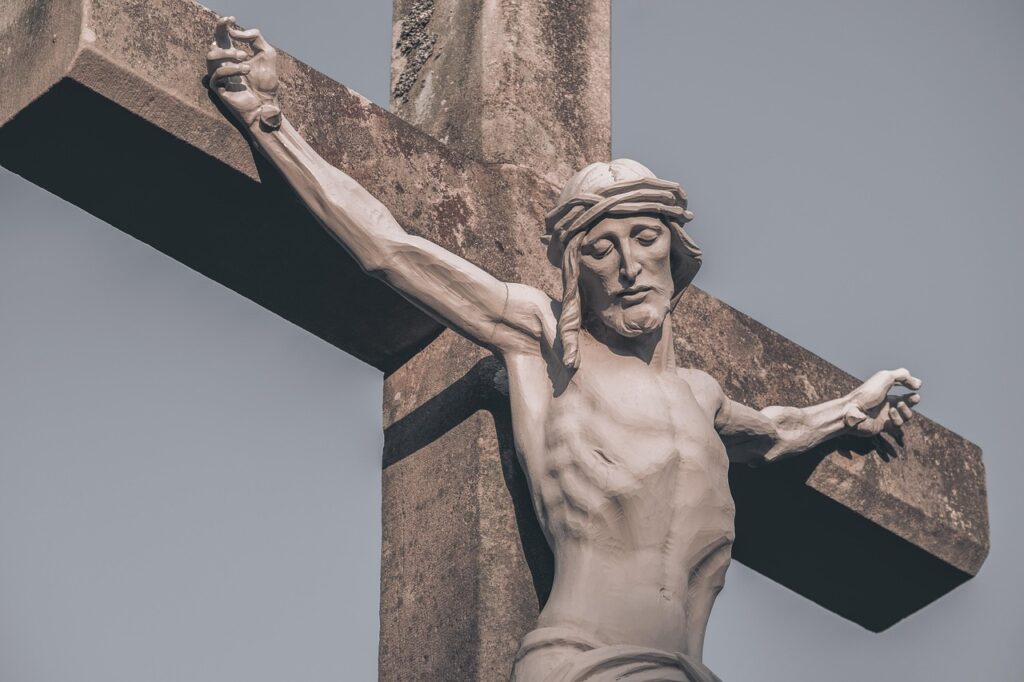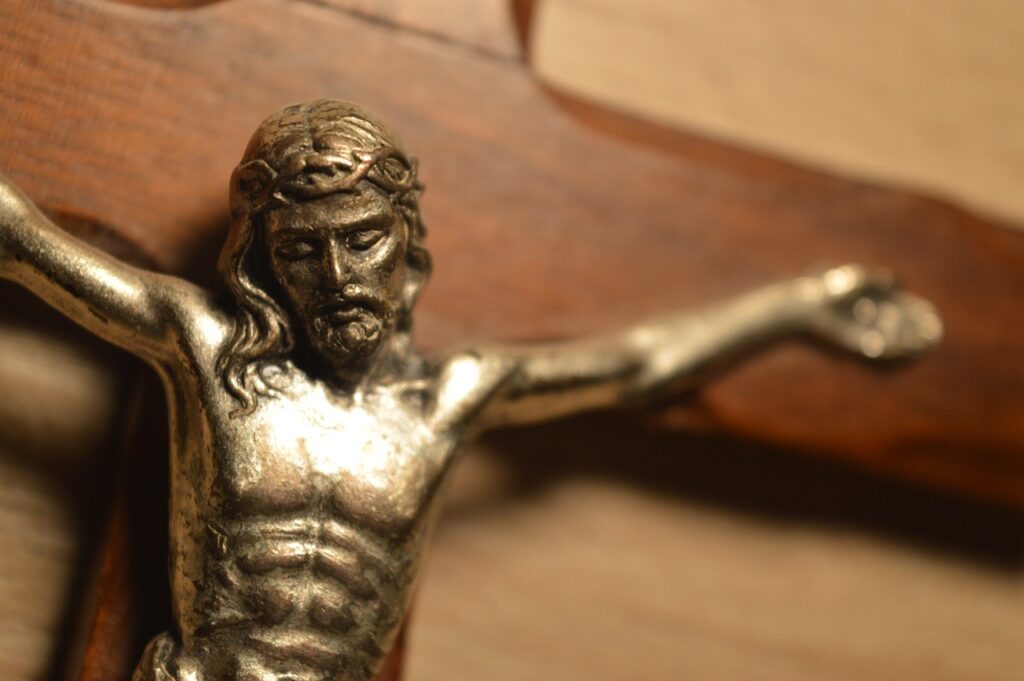
This article explores the debate surrounding the crucifixion of Jesus Christ, specifically whether he was nailed through his wrists instead of his hands. We will delve into historical, anatomical, and theological perspectives to provide a comprehensive understanding of this topic.
Understanding the Crucifixion
The crucifixion of Jesus is a pivotal event in Christian theology, symbolizing sacrifice and redemption. Traditionally, images depict Jesus with nails pierced through his hands. However, some scholars and medical experts argue that the nails were likely driven through his wrists. This discussion is rooted in both historical accounts and anatomical considerations.
The Gospels, which recount the life and death of Jesus, do not provide explicit details about the exact location of the nails. Instead, they focus on the significance of Jesus’ suffering and death. This ambiguity has led to varying interpretations over centuries. Understanding this debate requires a closer look at the anatomy of the hand and wrist and how it relates to the mechanics of crucifixion.
The Anatomy of the Hand and Wrist

To better understand the possibility of Jesus being nailed through his wrists, one must consider the anatomical structure of the hand and wrist. The human hand is made up of 27 bones, including the carpals, metacarpals, and phalanges. The wrist consists of several small bones known as carpals that connect the hand to the forearm.
Nailing through the palms could potentially cause severe damage to the nerves and blood vessels, leading to immediate loss of function and significant bleeding. The median nerve, which runs through the wrist and into the hand, could be affected, causing excruciating pain. Furthermore, the weight of the body hanging on a cross would likely cause the nails to tear through the hands, making it an ineffective means of securing the individual.
In contrast, nailing through the wrists, particularly between the radius and ulna bones, would provide a more stable anchor. The weight of the body would be better supported, reducing the risk of the nails tearing through the flesh. This anatomical consideration supports the theory that Jesus may have been crucified with nails in his wrists rather than his hands.
Historical Context of Crucifixion
Crucifixion was a common form of execution in the Roman Empire, utilized for various crimes, particularly those seen as threats to the state. The method was designed not only to kill but to serve as a public spectacle, deterring others from committing similar offenses. Understanding the historical context of crucifixion provides insights into how it was practiced and the methods used.
Historical accounts suggest that crucifixion involved a prolonged and painful death, often taking hours or even days. The Romans were skilled in their methods, ensuring that the execution was both a punishment and a lesson to others. The details of how victims were nailed to crosses varied, but the goal was always to maximize suffering.
In this context, the possibility of nailing through the wrists makes more sense. Given the intention behind crucifixion, the Romans would likely have aimed for a method that ensured the victim remained on the cross for as long as possible. Nailing through the wrists would allow for greater stability and prolong the suffering of the victim.
Theological Implications

The debate over whether Jesus was nailed through his wrists or hands also has theological implications. For many Christians, the crucifixion is not just a historical event but a cornerstone of their faith. The manner of Jesus’ suffering and death is deeply intertwined with the concepts of atonement and sacrifice.
Regardless of the specific location of the nails, the essential message of the crucifixion remains unchanged. Jesus’ sacrifice is viewed as an act of love and redemption for humanity. However, understanding the details of how this event occurred can enhance the significance of the event for some believers.
Moreover, the image of Jesus on the cross has permeated art and culture, often depicting him with nails through his hands. Changing this image to reflect a more anatomically accurate representation could alter the perception of the crucifixion for some individuals. It raises questions about how tradition shapes our understanding of historical events and their meanings.
Modern Medical Perspectives
Modern medical insights contribute significantly to the discussion about the crucifixion. Medical experts have studied the effects of crucifixion on the human body, providing valuable information about the physical suffering Jesus endured. These studies often focus on the physiology of hanging and the placement of nails.
Research indicates that the position of the nails would have dramatically affected the physical experience of crucifixion. If the nails were placed in the wrists, the body would have been able to hang more securely without the risk of the nails pulling through. This would lead to a prolonged and painful death, consistent with historical accounts of crucifixion.
Additionally, medical examinations of crucifixion victims have revealed that the physical trauma inflicted on the body would likely lead to severe pain, shock, and eventual death from asphyxiation or blood loss. Understanding these medical perspectives can provide a deeper appreciation for the suffering Jesus endured, regardless of the precise location of the nails.
The Role of Tradition in Interpretation

Tradition plays a significant role in shaping how events like the crucifixion are perceived. Over centuries, artistic depictions, sermons, and theological teachings have solidified certain images and interpretations in the minds of believers. The traditional image of Jesus nailed to the cross with nails in his hands has been passed down through generations, becoming a fundamental aspect of Christian iconography.
As discussions about the crucifixion continue, it is essential to recognize the power of tradition in shaping beliefs. While some may embrace the idea that Jesus was nailed through his wrists, others may feel a strong attachment to the traditional portrayal. This tension between historical accuracy and traditional beliefs can create challenges for those seeking a deeper understanding of their faith.
Moreover, the impact of tradition on interpretation extends beyond the crucifixion to other aspects of Jesus’ life and teachings. Understanding how tradition influences perception can lead to a more nuanced appreciation of the complexities surrounding religious texts and historical events.
Conclusion
The question of whether Jesus was nailed to his wrists instead of his hands is a complex issue that encompasses historical, anatomical, and theological dimensions. While traditional depictions have solidified the image of nails in the hands, modern anatomical studies and historical context support the possibility of nails being driven through the wrists.
Ultimately, the significance of the crucifixion transcends the specific details of how it occurred. The event represents a profound moment of sacrifice and redemption in Christian theology. Regardless of the physical details, the core message of love, suffering, and salvation remains central to the faith.
As believers continue to explore the implications of Jesus’ crucifixion, it is crucial to balance tradition with a pursuit of understanding. Engaging with historical and medical insights can enrich one’s faith and deepen appreciation for the sacrifices made during this pivotal moment in history.
FAQs
1. Why is there a debate about the location of the nails in the crucifixion?
The debate arises from a combination of anatomical studies, historical accounts, and traditional interpretations. Different perspectives on how crucifixion was practiced and the physical implications of nail placement contribute to this discussion.
2. How does the placement of nails affect the understanding of Jesus’ suffering?
The placement of nails can influence the perceived intensity and duration of suffering. Nailing through the wrists may allow for more prolonged suffering, which aligns with historical accounts of crucifixion.
3. What impact does tradition have on the portrayal of the crucifixion?
Tradition shapes how events like the crucifixion are depicted in art and theology. It often solidifies certain images and interpretations that may not fully align with historical accuracy.
4. Are there any other interpretations of the crucifixion in different cultures?
Yes, various cultures and religious interpretations offer different perspectives on the crucifixion, often emphasizing unique themes of sacrifice, redemption, and suffering that resonate with their beliefs.
5. How can exploring historical and medical perspectives deepen faith?
Engaging with historical and medical insights can provide a richer understanding of the crucifixion, enhancing appreciation for its significance and the sacrifices made, ultimately deepening one’s faith experience.






